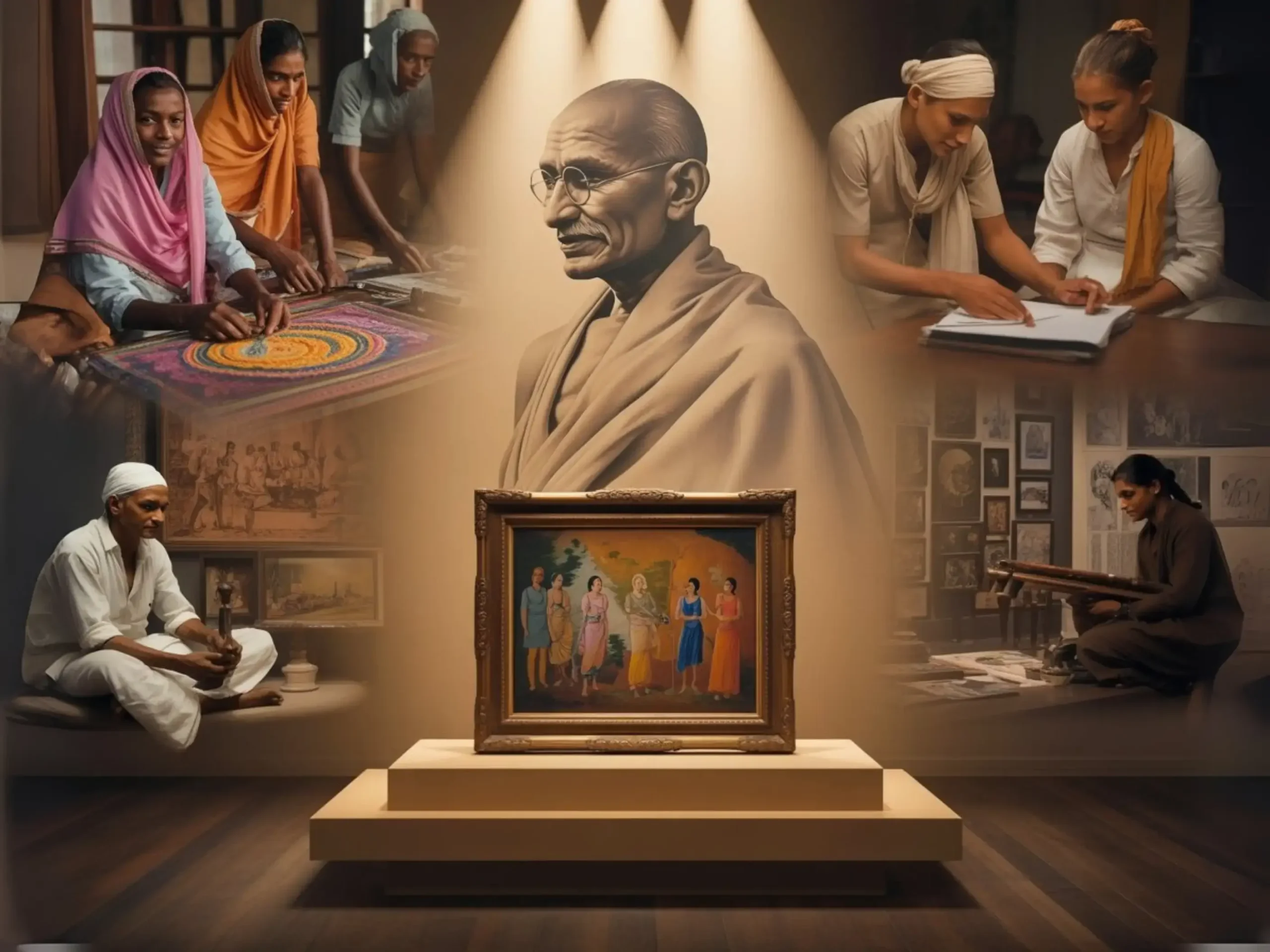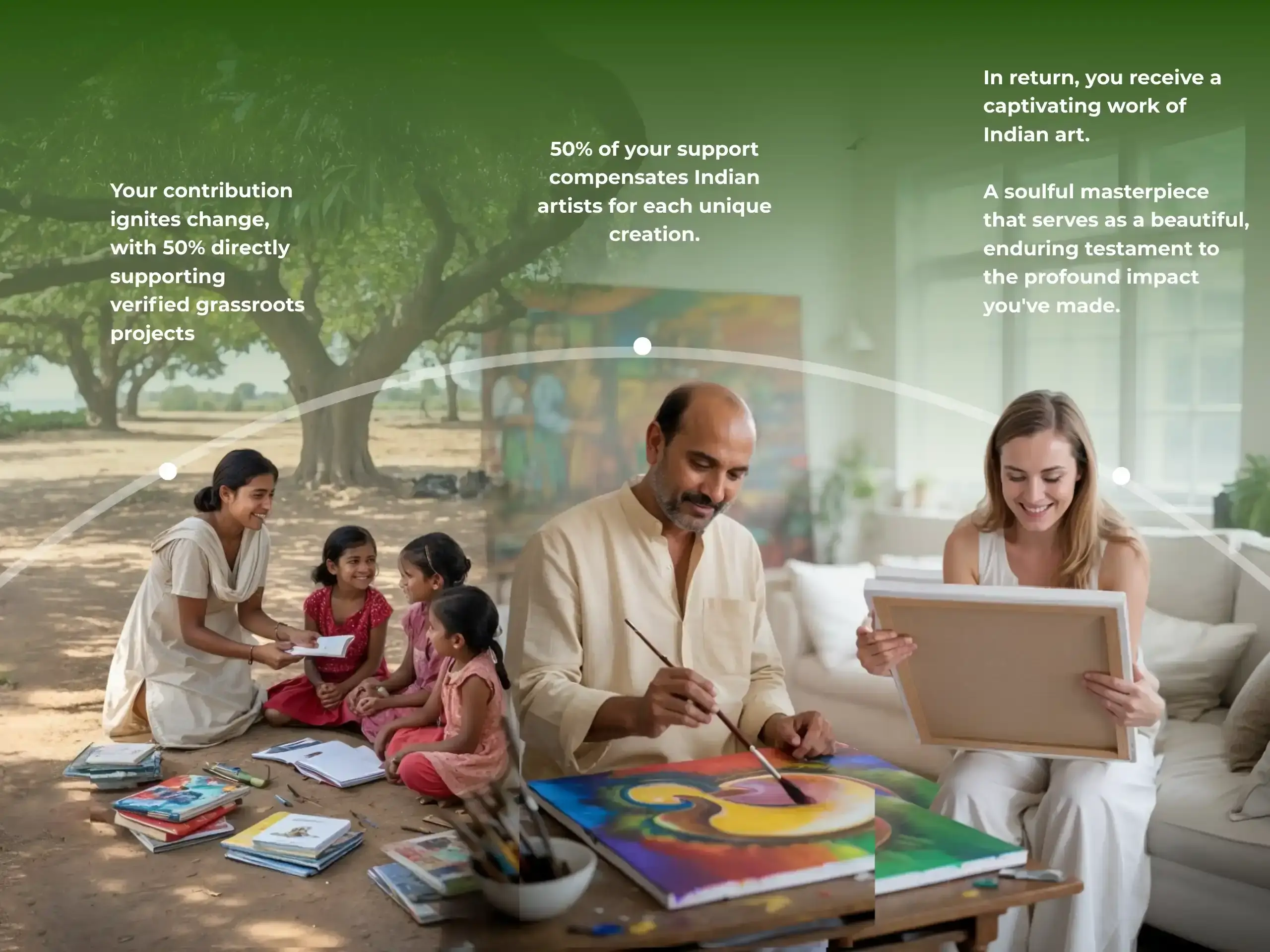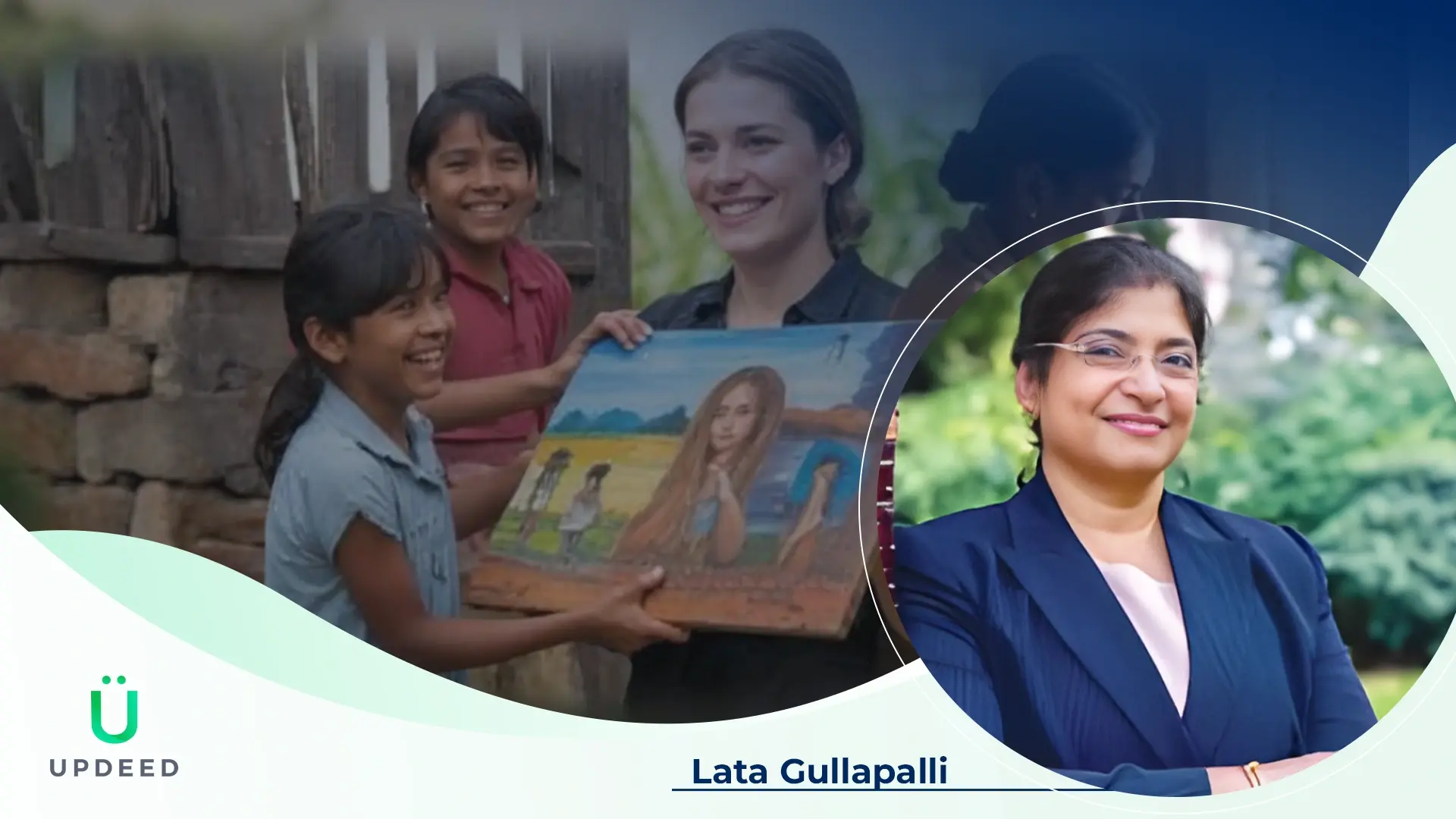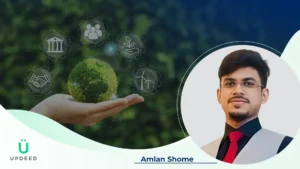Some careers are defined by deals.
Lata Gullapalli’s is defined by dignity.
For over two decades, Lata worked at the highest levels of global finance. She navigated complex cross-border transactions, advised on IPOs, and sat on governance boards where precision, transparency, and accountability were non-negotiable. But today, when she speaks about the work that gives her the deepest sense of purpose, she doesn’t talk about the markets or financial performance. She talks about classrooms. About children. About Gandhiji’s legacy of dignity.

Lata has not stepped away from her professional world; she has redirected its rigor. The same discipline that once steered billion-dollar decisions now fuels her work at institutions that serve India’s most underprivileged communities. Her journey is not a switch from business to “social work.” It is the same strength, applied where it matters most—on the ground.
At the heart of this journey stands one of India’s most historic institutions: the Harijan Sevak Sangh (HSS), widely known as the Gandhi Ashram.
Carrying Forward a Century of Legacy
Founded in 1932 under the guidance of Mahatma Gandhi and Kasturba Gandhi, the Harijan Sevak Sangh was born with a radical mission: to advance dignity, education, and social inclusion for those considered last in society’s line.

Nearly a century later, HSS remains a national treasure. Its legacy is both inspirational and demanding. Generations of children have walked through its doors to receive education and skills training, often for the first time in their families. Alumni of HSS institutions have gone on to become teachers, nurses, entrepreneurs, and leaders in their own right.
As a trustee, Lata feels the weight of that responsibility.
“The institution that the Harijan Sevak Sangh or the Gandhi Ashram is, is truly something that is a national treasure and a source of immense pride as well. I feel a huge sense of national pride to be working with such an institution and helping to rebuild it to go forward into perhaps the next hundred years or more. There is of course a deep responsibility as well to carry forward a legacy set by none less than Kasturba Gandhi herself. Everything I do, I need to check and recheck myself to see that I am keeping those standards as well as taking the institution into the new age.”
For Lata, legacy is not a museum artifact. It is not something to be admired passively.
Legacy is responsibility.
It is timetables, ledgers, lesson plans, and the courtyard of a hostel where children spill out after class. It is living, breathing, and evolving.

From Boardrooms to Village Classrooms
What makes Lata’s role unique is her ability to apply boardroom rigor to grassroots challenges.
In finance, she was known for her discipline: aligning stakeholders, setting transparent goals, and executing with precision. Today, she brings that same discipline to HSS.
- Stakeholder Alignment: Lata listens closely to alumni, teachers, local leaders, and families. Their voices shape the priorities of HSS.
- Program Design: She prioritizes initiatives that compound – education access, skills training, women’s livelihoods. These are not one-time acts of charity; they are investments in resilience.
- Governance and Transparency: Her financial background ensures that accountability systems are strong. Impact is not measured by stories alone but by metrics, audits, and outcomes.
In practice, this means classrooms being rebuilt with safe, modern facilities. Hostels being upgraded for dignity and safety. Teachers being supported with training and resources. Community spaces that feel both rooted in Gandhian values and ready for the next generation.
It isn’t glamorous work. It is patient, essential institution-building.
Education as the Engine of Change
At the center of Lata’s vision is one conviction: education multiplies opportunity.
The Harijan Sevak Sangh has always been an education-first institution. Today, Lata is strengthening that foundation by expanding access to secondary education, especially in regions where geography and resources quietly limit a child’s future.
When a rural teenager gains access to a science lab, a trained teacher, and a clear path to higher studies, the returns ripple outward:
- A child stays in school longer.
- A family experiences upward mobility.
- A community stabilizes for the next generation.
This is why HSS’s work matters just as much in 2025 as it did in 1932. And this is why Lata’s leadership is vital.
Livelihoods that Keep Impact Local
Education opens the door. Livelihoods keep it open.
Alongside her work with HSS, Lata also collaborates with grassroots organizations like the Grameena Project, which mentors women entrepreneurs in rural India. The model blends coaching, community trust, and market access, helping women turn skills into sustainable income.
When women lead, children stay in school longer. Local economies stabilize. Communities thrive from within.
For Lata, this is not “charity.”
It is capacity-building.
It is dignity over dependency.
Art as a Bridge (Not the Destination)
In 2025, Lata organized an exhibition titled Art for Hope – a one-off fundraiser designed to channel support for Gandhi Ashram and allied initiatives.
Her reasoning was simple: if people are asked to donate, they often expect little more than a receipt. What if, instead, they received something lasting—an artwork equal to the value of their donation?
“When I thought of fundraising for these two charities, I too thought of asking people or corporations to donate generously. But then I thought what do they get at the end of it—a receipt for the money they give and perhaps some newsletters or videos over time. I thought it would be a good idea to involve artists so each donor can get an artwork of the value of their donation.”
Lata personally met with senior artists in India to convince them. Once they agreed, younger artists followed. The collection was staged at Delhi’s iconic Bikaner House and featured established, emerging, and atypical artists.
The model was unique: 50% of each contribution supported artists, and 50% supported the charities.
But crucially, Art for Hope was not the mission itself. It was a bridge—a way to convene supporters, celebrate artists, and fuel deeper institutional work.
“Art for Hope was a one off project to build awareness for the charities as well as a platform for the artists to exhibit and sell their work. People want it back, but right now I’m not sure when that will happen.”
The heart of Lata’s work remains Gandhi Ashram and the communities it serves.
Visit “Art for Hope” UPDEED Campaign page to know more.

Why Her Background Matters
Lata’s perspective is not new, it is the product of decades.
“I have been a collector of art and a philanthropist in one way or another for over 30 years. The past few years have taken me further along with trusteeships in these charities and I have been working in a more hands-on way.”
Her upbringing, shaped by frequent moves, diverse communities, and a family culture of helping anyone in need, has ingrained in her a natural empathy.
“Helping anyone who came to ask for help or who seemed to need help is well entrenched in our families on both sides of our parents and the rest of the families too.”
This long view informs how she measures progress. For Lata, success is not defined by headlines or events. It is measured by:
- The number of children who gain access to better schooling.
- The dignity of living spaces in hostels.
The strength of institutions that can stand on their own for decades.
The Gandhian Thread
Gandhiji’s principle of serving “the last person in line” runs like a thread through Lata’s journey.
For her, Harijan Sevak Sangh is not just history—it is a living mandate. The challenge is not to preserve it as a museum but to make it relevant to the needs of today’s children:
- Connected classrooms.
- Safe hostels.
- Transparent funding.
- Programs that prepare students for modern opportunities.
Her stewardship is about evolution, not preservation. About carrying the torch forward, not just holding it up.
Why Gandhi’s Legacy Needs Modern Stewards
Institutions like HSS are rare. They have credibility, continuity, and deep community trust. But without modern stewards, even the strongest legacies risk stagnation.
Lata understands that Gandhian ideals must be translated into contemporary practice. Classrooms need connectivity. Teachers need training. Livelihood programs need market access.
This is where her global background meets her national responsibility. She blends governance with empathy, strategy with service.
How You Can Lean In
For readers, the takeaway is not just to admire Lata’s story but to engage with the legacy she serves.
- Learn the Legacy: Explore the history of Harijan Sevak Sangh and understand why it remains vital today.
- Back What Compounds: Support initiatives that multiply value—secondary education, teacher training, women’s entrepreneurship.
- Offer More Than Money: Mentorship, internships, learning resources, market access. Often the right introduction changes more than a cheque.
Connect with Lata Gullapalli on UPDEED
Explore more about Lata Gullapalli’s work and initiatives, visit her company website: Savoir-Faire.org.
Closing Thought
When we think of legacy, we often picture portraits and plaques. Lata Gullapalli thinks of timetables, lesson plans, and courtyards where children argue about math problems after class. That is the quiet power of her work and the enduring promise of the institution she has chosen to serve.
The Harijan Sevak Sangh carries Gandhi’s ideals into the present. Lata’s work ensures they will travel confidently into the future.
Quietly. Relentlessly. With dignity.








